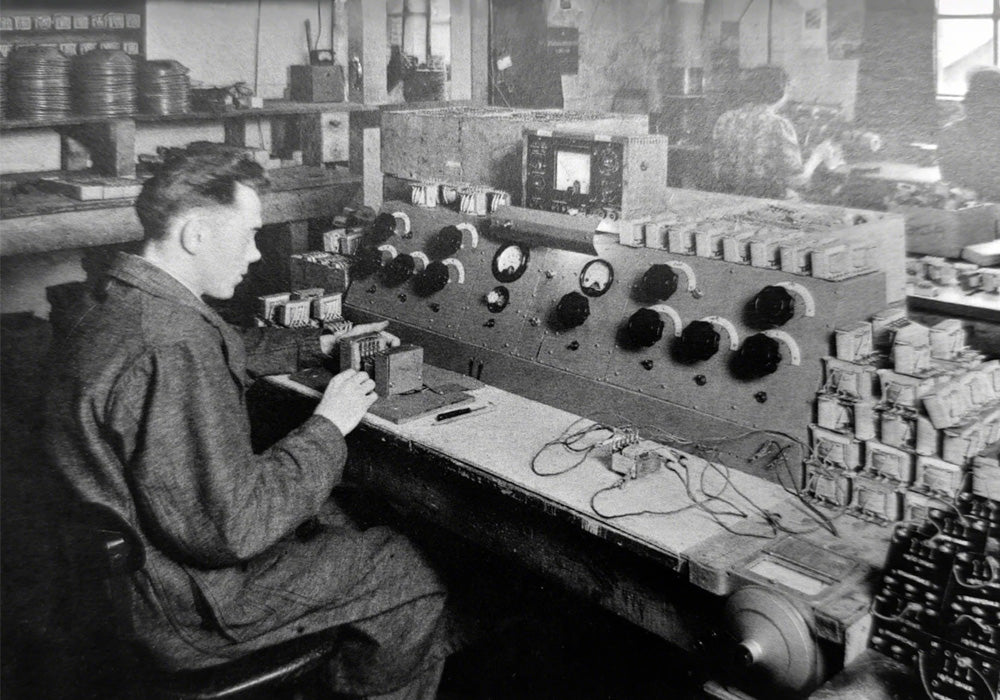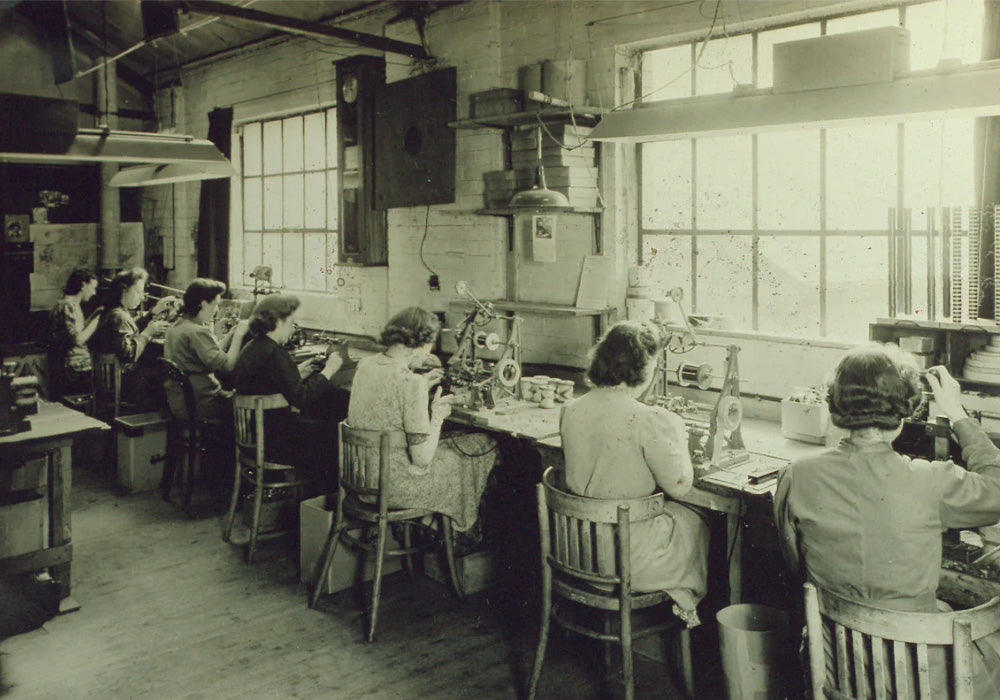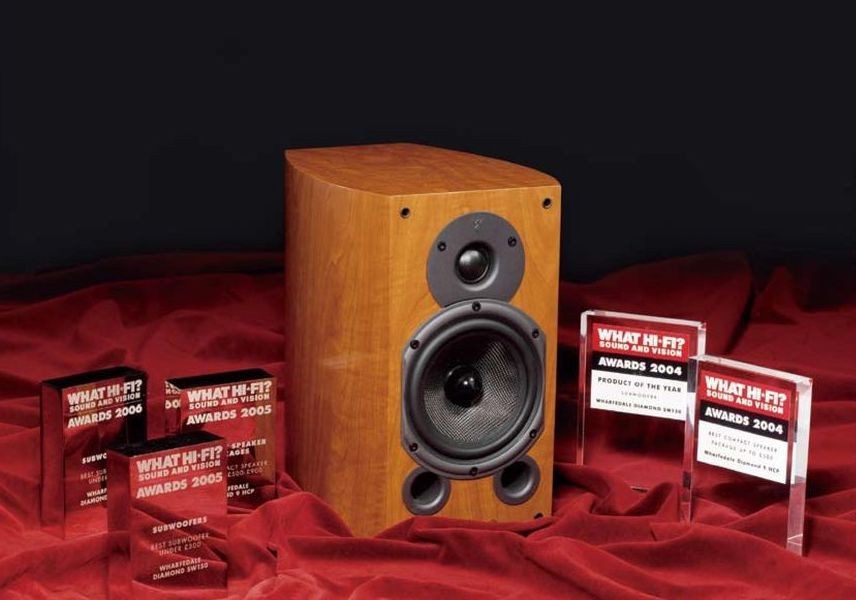Wharfedale: A Legacy in Loudspeakers
The Birth of Wharfedale
Wharfedale was founded in 1932 by Gilbert Briggs, a music enthusiast and amateur engineer. He built his first loudspeaker in the cellar of his home in Ilkley, Yorkshire. The location, nestled in the valley of the River Wharfe—an area known as Wharfedale—inspired the brand name.
Gilbert's commitment to high-fidelity sound reproduction would go on to shape the hi-fi world. His legacy includes pioneering work in speaker design and a life-long love of live music as the benchmark for audio performance.

Wharfedale Wireless Works
By the start of World War II, Wharfedale was producing over 9,000 units per year, setting the stage for national recognition.
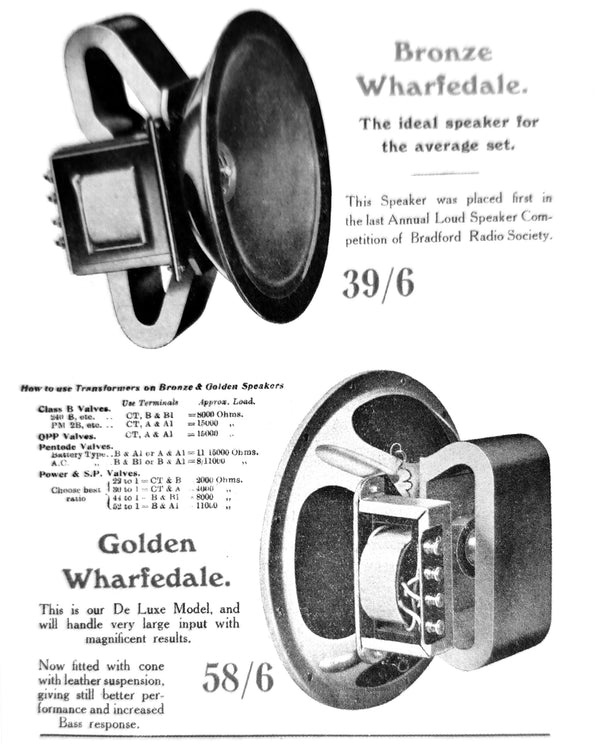
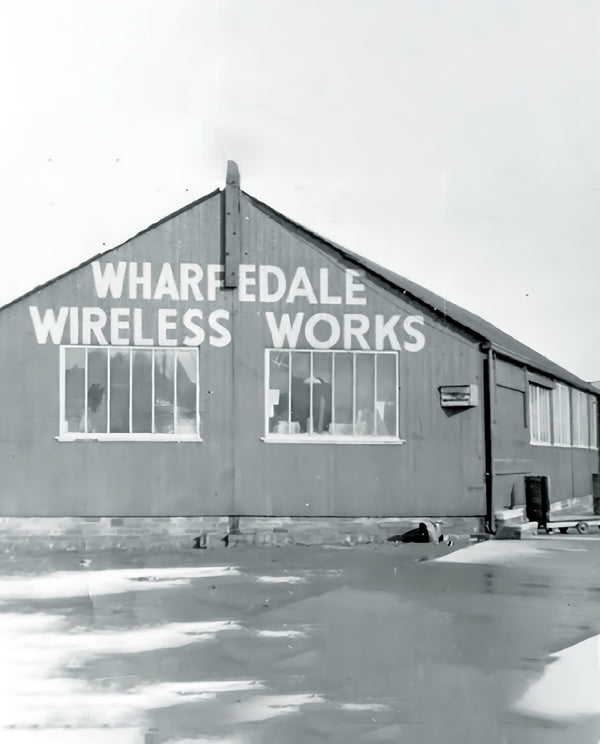
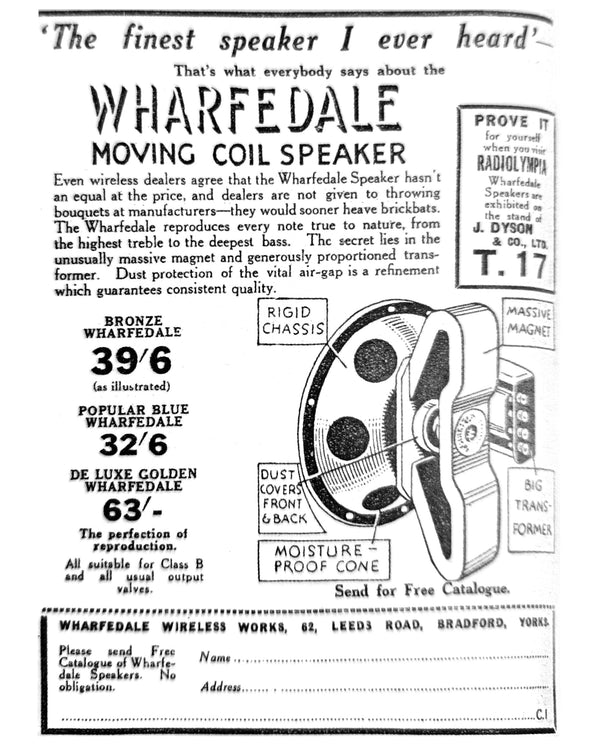
Innovation with the Two-Way Speaker
Post-war America saw rising demand for high-quality sound systems. Wharfedale responded with one of the first two-way loudspeakers—a revolutionary design featuring a dedicated tweeter and mid/bass driver with an advanced crossover system. Though massive by today’s standards, it set the blueprint for modern speakers.

Publishing Begins
Briggs published his first book, Loudspeakers: The Why and How of Good Reproduction, followed by Sound Reproduction and others. His works sparked thousands of letters of correspondence, solidifying his position as an educator and visionary in sound science.
Live vs. Recorded Concerts with QUAD
In a groundbreaking demonstration that blurred the line between art and science, Wharfedale and QUAD joined forces in the 1950s to stage a series of revolutionary live versus recorded concerts—events that became legendary in the world of hi-fi. These demonstrations featured a live musical performance followed by an immediate playback of the same performance through QUAD amplification and Wharfedale loudspeakers, all behind a curtain to conceal the source. The goal? To test whether audiences could distinguish between the live musicians and the reproduced sound. The results were astonishing: many listeners struggled to tell the difference, a testament to the extraordinary fidelity of the equipment. These events didn’t just showcase technological prowess—they elevated audio reproduction to a form of acoustic truth, solidifying Wharfedale and QUAD as pioneers committed to capturing the realism and emotional impact of live music through recorded sound.
In 1958, Hi-Fi News & Record Review reported on the significance of these demonstrations, noting they “redefined the possibilities of the domestic loudspeaker."
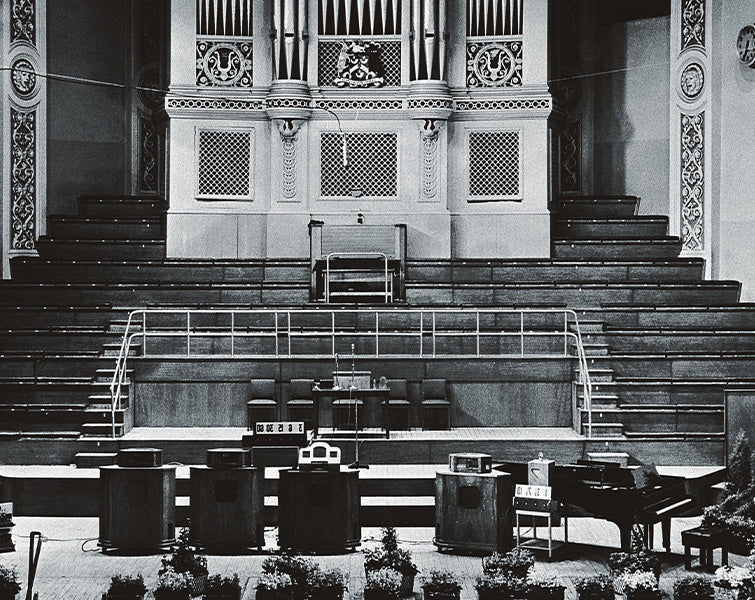
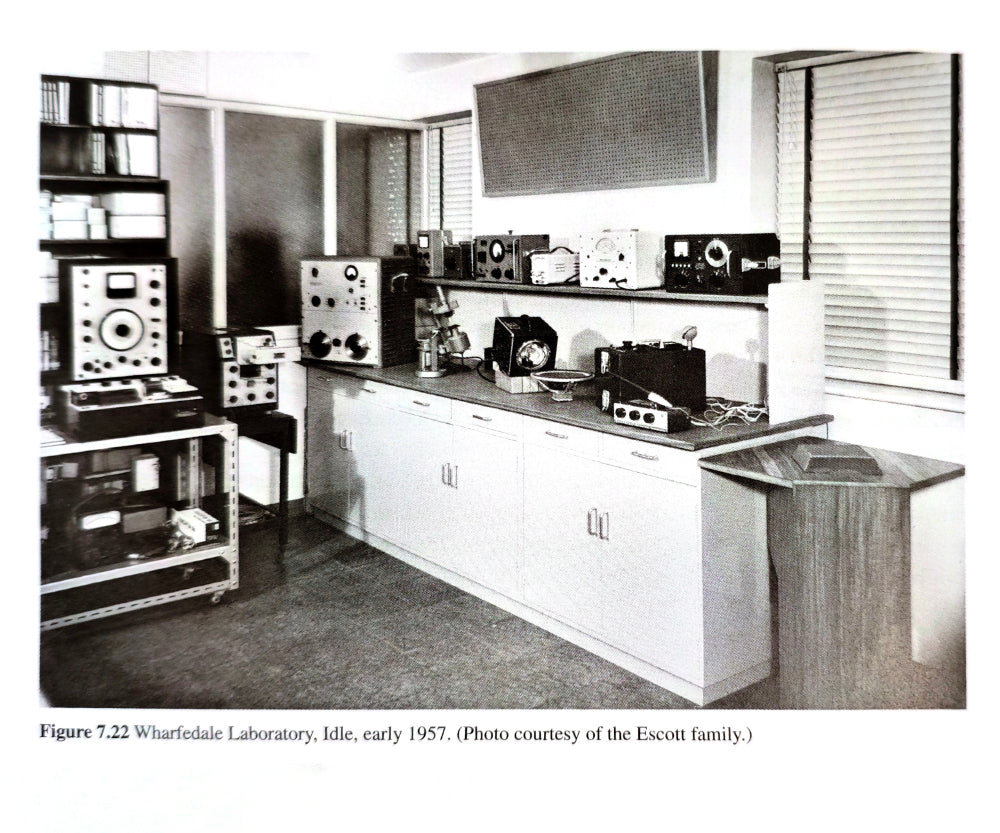
Roll Surrounds and Ceramic Magnets
Under the Rank Organisation, Wharfedale expanded into electronic components and introduced industry-first technologies like ceramic magnets and roll surrounds. These improved speaker durability and efficiency.
Wharfedale also launched its first integrated hi-fi systems, including turntables and tuners, embracing the growing interest from the post-war youth market.
Factory Expansion
To meet demand, Wharfedale began construction on a 170,000 sq. ft. facility in Highfield Road, Bradford. It took seven years to complete and included R&D laboratories, engineering offices, and mass production lines, enabling Wharfedale to produce up to 800,000 drive units annually by the mid-1970s.
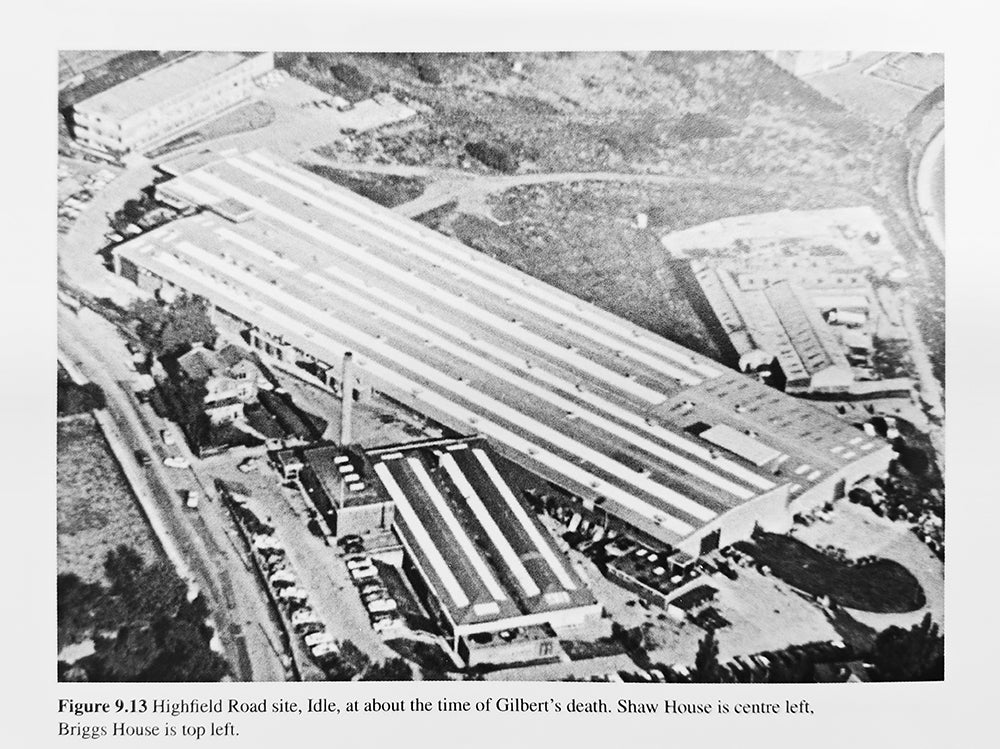
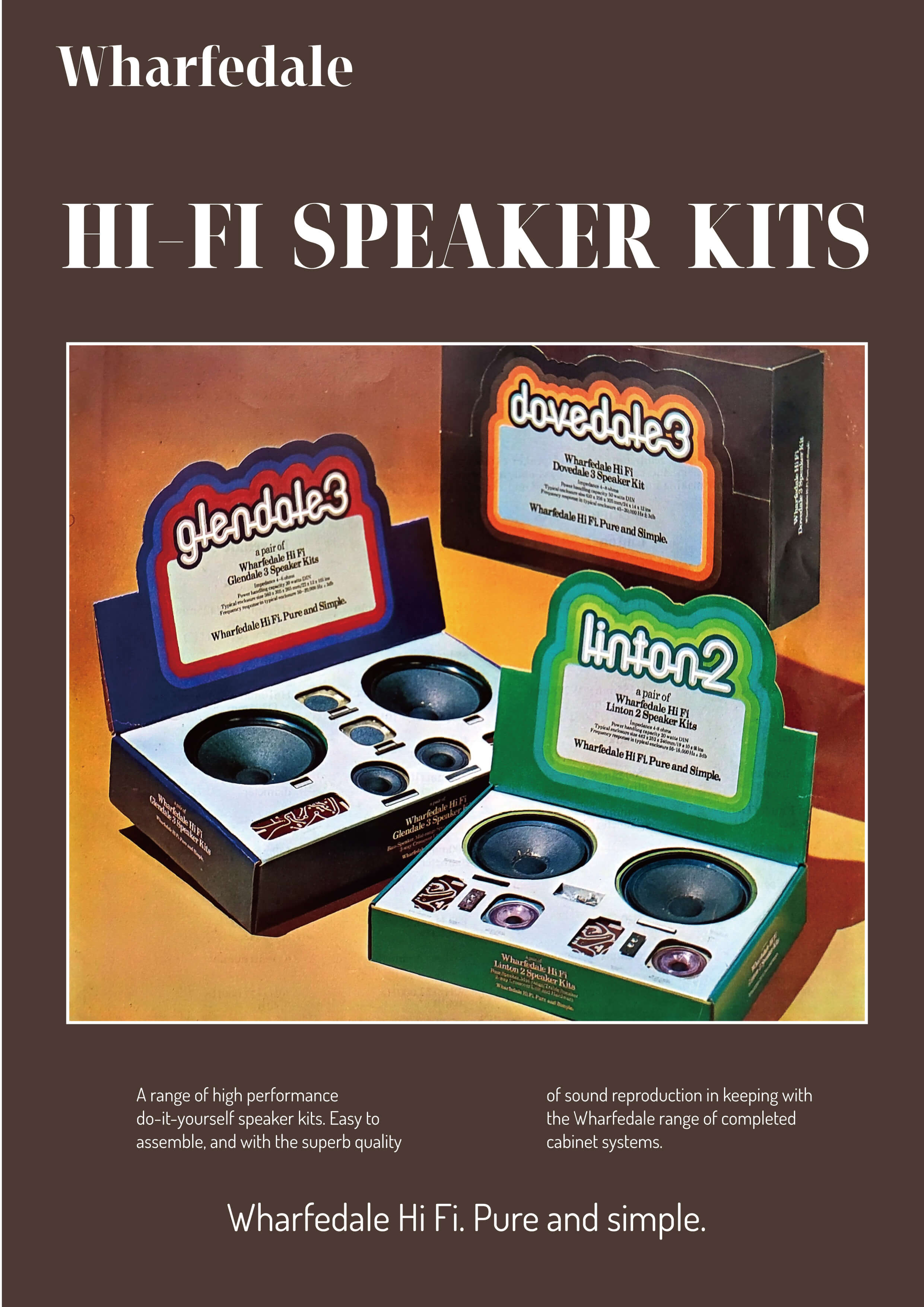
Kits and Classics
Wharfedale reintroduced loudspeaker kits under the Speakercraft name, reviving DIY audio culture. Popular models like the Glendale, Lintons, and Dentons appealed to serious enthusiasts. Wharfedale maintained strong sales, backed by its expansive factory output and excellent brand loyalty.
Laser Technology
Wharfedale pioneered acoustic testing with Laser Holography (SCALP) and Frequency Slice Plotting (FRESP). These tools enabled real-time analysis of cone motion, leading to breakthroughs in cone material design – a landmark not only in technology of the time but also the formation of new steps in Wharfedale’s use of modern technology and design principles in loudspeaker design. Unlike many other brands, Wharfedale’s investment in technology was (and still is) utilised to bring better quality and more affordable prices – rather than high-end, unattainable solutions.
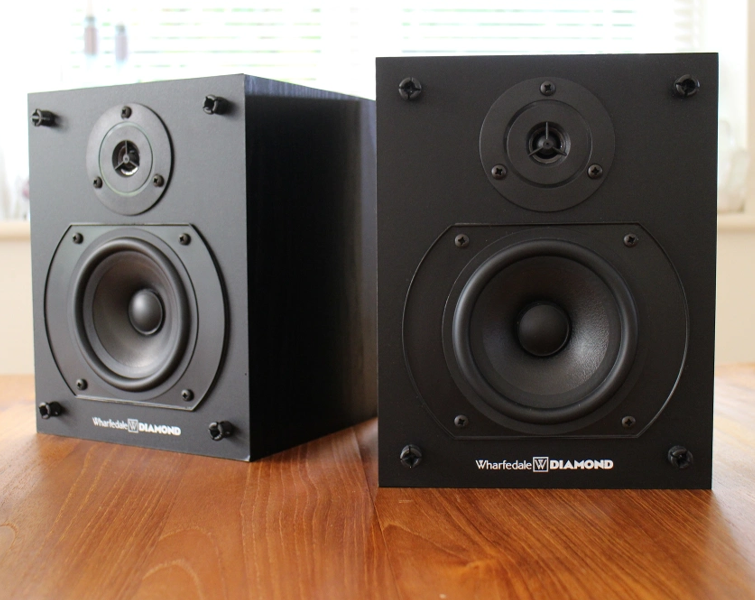
The Diamond Revolution
In 1982 Wharfedale launched the Diamond 1 bookshelf speaker – a compact 2 way unit that would change the brand’s fortunes. Priced at only £65, the Diamond 1 astounded reviewers with its musicality. What Hi-Fi? later observed that this squat 24cm tall speaker “delivered surprising bass weight (for one so small) and had far more finesse than their lowly price suggested” whathifi.com. While Stereophile magazine called it “a defining entry-level speaker”.
The original Diamond was so successful that Wharfedale turned it into a whole series (floor standers, centre-channel, active versions, etc.). Over the next three decades, the Diamond family became Wharfedale’s best known line, evolving through twelve generations, winning countless awards to this very day.
The Diamond’s success underscored Wharfedale’s philosophy: combining British design flair with practical engineering. Affordable “budget” speakers in this line benefited from distributed bass ports, advanced cone materials, and optimised crossover layouts – all innovations that would have been considered exotic just a few years prior, (That Was Then.. Wharfedale Diamond review whathifi.com). In short, the Diamond series has always proved that high-value, highly musical speakers could be built on a mass-production budget, extending Wharfedale’s reach as a standard-bearer in the hi-fi market
Multiple Owners, One Home
The 1980s and early 1990s saw Wharfedale undergo ownership changes and financial ups and downs. By the early 1990s Wharfedale had become part of the British Verity Group (which also owned Quad and Leak). In 1996 a management buyout briefly returned Wharfedale to independence, as new competition and market shifts put pressure on many established hi-fi companies. Nevertheless, Wharfedale continued to produce speakers and expand its range (the Diamond 9 series, for example, debuted in this era).
A major turning point came in late 1997 when the International Audio Group (IAG) acquired Wharfedale. This group, founded in 1991, brought together several British audio heritage brands (QUAD, Leak, Castle, Mission, Audiolab and Luxman among them). Under IAG, Wharfedale’s design and engineering teams remained in the UK (now based in Huntingdon, Cambridgeshire), while production in a custom-built, self-owned manufacturing facility dedicated to the IAG group of brands.
This global structure – British R&D with dedicated manufacturing in China– enabled Wharfedale to invest in new research and expand into global markets once more with a return to independent, hi-fi-focused ownership and rekindled dedication to innovation.

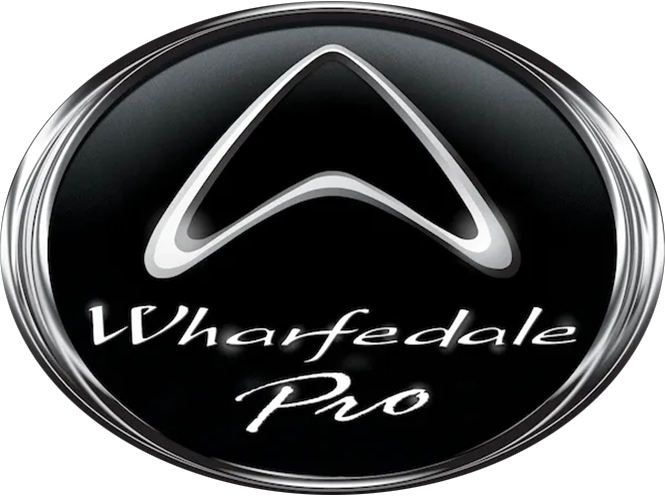
Wharfedale Goes Pro
Wharfedale created Wharfedale Pro to cater to professional sound applications—concerts, studios, and events.
The momentum of development within the Professional industry prompted the decision to establish a separate division within Wharfedale to concentrate purely on the Professional market. Wharfedale Pro was born.
Today, Wharfedale Pro is a leading force in the highly competitive professional market. The portfolio includes amplifiers, mixing desks, effects modules, equalizers, and lighting, as well as loudspeaker ranges to suit every application and installation. All have a common design philosophy: Value, Integrity, and performance.
Diamond 8 & 9 Series
The Diamond 8 Series launched in 2001, praised by What Hi-Fi? as a “true return to form” (What Hi-Fi Review). It was followed by the Diamond 9 Series in 2003, earning multiple awards for soundstage and tonal balance. These ranges solidified Wharfedale’s resurgence in domestic hi-fi.
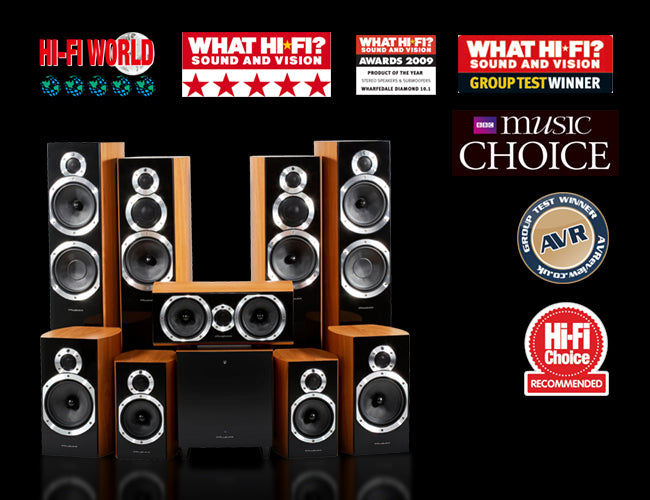
Diamond 10 Series
The Diamond 10 Series introduced curved cabinets and further refined crossovers. Further defining the Diamond series as go-to reference model for affordable, quality hi-fi. The Diamond 10.1 being the most decorated model of that period. Stereophile magazine declared that the 10.1 presents “…extraordinary value for money, with many strengths that suggest a considerably higher price..”
Countless journalist and reviews cited the Diamond 10s credentials and outstanding performance, including John Darko.
Jade Series
The Jade series offered high-end materials like Crystalam cabinets and acoustically neutral enclosures, delivering premium performance at mid-range pricing. Hi-Fi Review described it as “a landmark product, blending technology with accessible luxury.” (Hi-Fi Review)
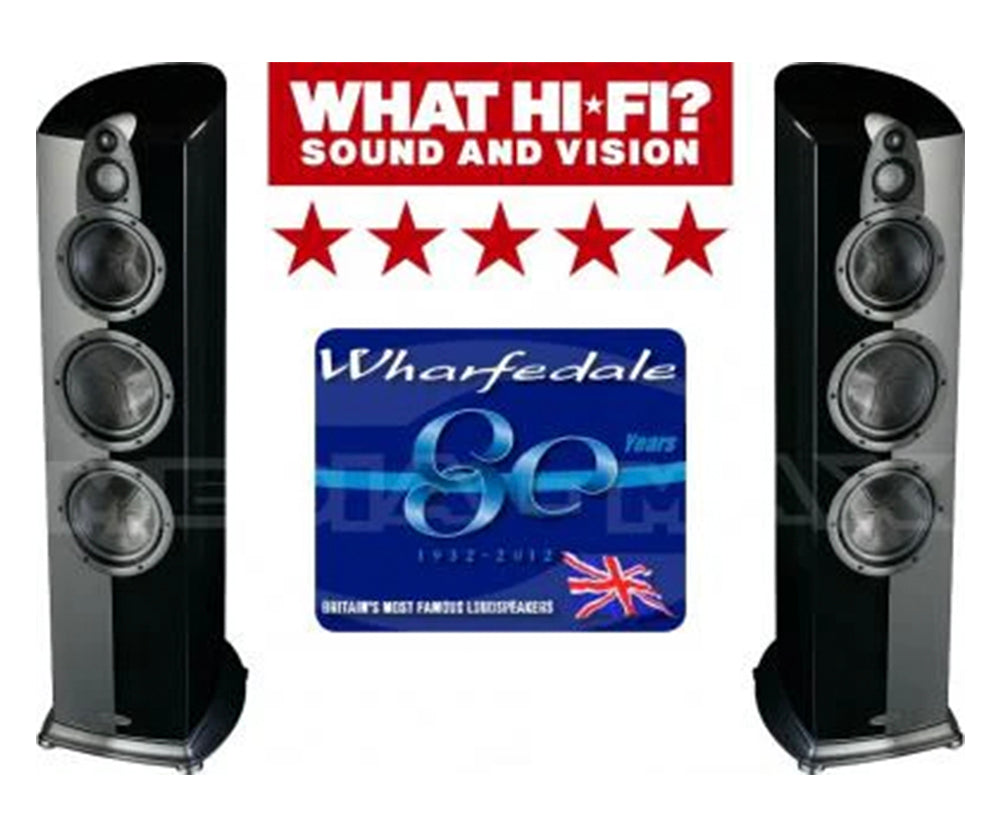
Denton 80th Anniversary
To mark Wharfedale’s 80th Anniversary, Wharfedale presented an anniversary edition of one of its most historically popular loudspeakers, the Denton. The Denton 80th Anniversary is a classic bookshelf two-way speaker. It was beautifully crafted with hand-veneered walnut and mahogany, an inset front baffle, and a traditional Tungsten cloth grille. The updated Denton was the first of the reimagined Wharfedale heritage designs, pioneering the popularity of modern classic speaker designs.

Wharfedale AMT, Elysian and EVO4
Wharfedale’s loudspeaker innovations stepped into a new realm of Air Motion Transformers with two ‘hero’ projects in the form of Elysian and EVO4.
The Wharfedale Elysian series represents the pinnacle in the brand's 90-year history as a ‘no expense spared’ project that aims to push the boundaries of technological developments yet maintain affordability in its competitive price range. Demonstrating Wharfedale’s ability to compete and excel in price brackets of more premium audio, the Elysian series was promptly acknowledged as a loudspeaker offering for audiophiles seeking a luxury audio experience, both aesthetically and sonically.
What Hi-Fi? gave the Elysian 4 a 5-star rating, calling it “rich, authoritative and expansive”
The EVO4 series followed, borrowing Elysian’s advanced technologies—like SLPP ports and AMT tweeters—at lower price points, gaining widespread acclaim. Offering real-wood veneers and a fit/finish that stood leaps and bounds ahead of generally vinyl-laminated rivals, EVO4 became a reviewer’s favourite and one of Wharfedale’s most successful loudspeaker series of all time, not to mention consecutive What Hi-Fi? Awards in various categories.
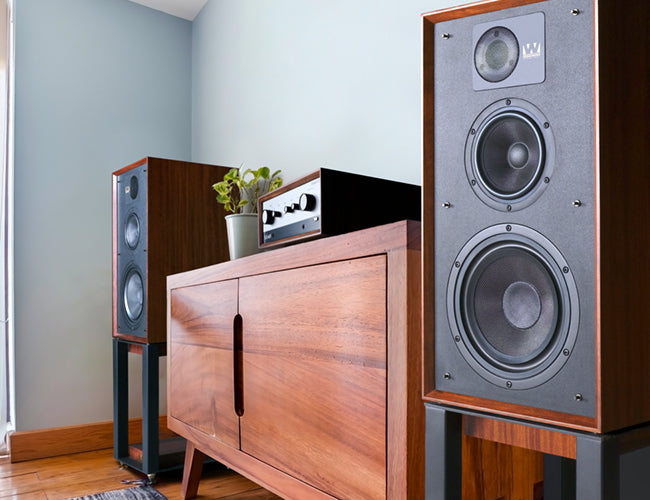
Linton Heritage
The Wharfedale Linton has emerged as one of the brand’s most celebrated and successful loudspeakers in 2019.
Originally introduced in 1965, the Wharfedale Linton quickly became a cornerstone of the brand’s reputation, offering a blend of musical warmth, accuracy, and affordability. The original Linton’s legacy is so strong that when Wharfedale announced a modern reimagining—the Linton Heritage 85—in 2019 to mark the company’s 85th anniversary, the audiophile community responded with eager anticipation.
The Linton 85 was no mere nostalgic nod; it was a fully modern loudspeaker with vintage charm, marrying traditional cabinet aesthetics with contemporary acoustic engineering. Designed by Peter Comeau, Wharfedale’s Director of Acoustic Design, the speaker kept its classic three-way configuration but used updated drive units, a carefully tuned crossover, and modern materials to ensure class-leading performance.
The Linton Heritage 85 quickly earned glowing reviews from critics and consumers alike. What Hi-Fi? described it as a “modern classic,” praising its “full-bodied sound, great scale and sweet midrange.” In their review, they concluded, “You don’t often find this level of performance, build and charm at this price.”
Stereophile, one of the most respected publications in high-end audio, also heaped praise on the Linton. Writing in 2021, Ken Micallef observed: “The Linton produced music with a palpable sense of immediacy and warmth… A genuine slice of musical joy.” It was subsequently added to their Recommended Components list, a rare honour for speakers in its price class.
Steve Guttenberg, the "Audiophiliac" reviewer and YouTube personality, hailed it as one of the best-value speakers on the market. He noted: “It’s hard not to love this speaker. It’s got real soul.”
Following its release, the Linton Heritage 85 became a global bestseller. It was particularly successful in Europe, Asia, and North America, where dealers frequently reported backorders due to demand. Much of the speaker’s success lies in its appeal to both seasoned audiophiles and newcomers alike. Its warm, balanced sound signature, generous cabinet design, and real wood veneer construction gave it the character of a far more expensive loudspeaker—yet it remained accessible.
Diamond 12 Series
The Diamond 12 Series was a return to form in the entry-level segment and is glowing testament to Wharfedale’s ability to reinvent the affordable loudspeaker with elegance, intelligence, and unshakable musicality, while maintaining astonishing value.
Built in collaboration with the revered loudspeaker designer Karl-Heinz Fink, the Diamond 12 Series redefined expectations in the entry-to-mid-level hi-fi category. Every element—from the Klarity™ polypropylene/mica composite drivers, to the finely tuned crossovers, to the robust cabinet bracing—was designed with one goal in mind: uncompromising sound.
Critics didn’t hold back: What Hi-Fi? called the Diamond 12.1 “a class leader,” praising its “outstanding detail and dynamic expression.” Hi-Fi Choice, The Absolute Sound, and AV Forums echoed the sentiment, placing the Diamond 12 firmly at the top of their recommendations.
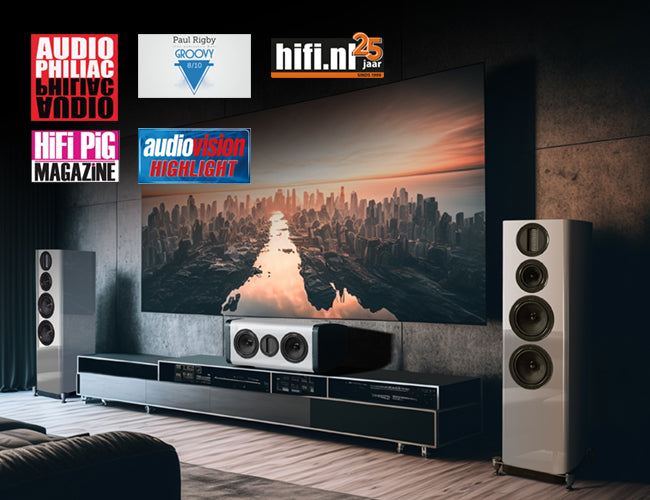
Something of an Aura
The Wharfedale Aura series, launched in 2023, represents a significant addition to the brand’s portfolio, positioned as a mid-tier offering between the entry-level EVO series and the flagship Elysian series. This series is designed to deliver advanced audio technology at a more accessible price point, appealing to audiophiles and home theatre enthusiasts alike.
With advanced features like the AMT tweeter and SLPP port system, and positive reception in reviews, it represents a compelling choice for those seeking quality sound without the flagship price.
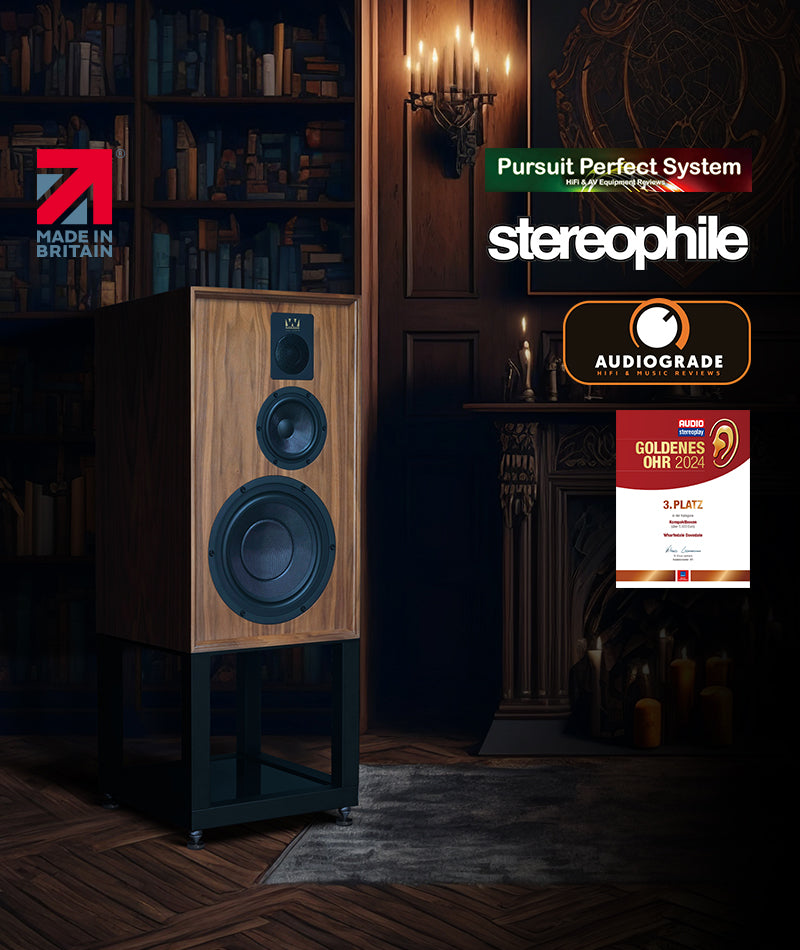
Return to the UK!
Following the huge success of Wharfedale heritage speakers, Dovedale entered the market in 2023 with high anticipation. The biggest and best heritage Wharfedale speaker yet and entirely designed and manufactured within the UK.
In 2022 Wharfedale’s parent company IAG unveiled a new ‘Made in the UK’ initiative to enable the manufacturing of specific products to be brought back to the UK without skyrocketing costs. IAG has expanded its facilities at its base in Huntingdon, Cambridgeshire, incorporating key manufacturing, assembly and finishing processes for specially selected products in addition to the R&D function already located there.
A 9,000ft2 production facility has been added to the existing building,
including a new anechoic chamber, making a total of 25,000ft2 of office, lab and manufacturing space.
With Dovedale being the first Wharfedale speaker to be officially Made in Britain for many years – it’s a true celebration of British loudspeaker design and manufacturing, as befits Wharfedale’s top-of-the-line Heritage model.
The Dovedale demonstrated Wharfedale’s design pedigree and manufacturing capability and was a testament to the continuous innovation that forms part of its DNA – it was introduced with a firm recommendation that ‘You Will Want These as your NEXT SPEAKERS by leading reviews, such as Pursuit Perfect system. Dovedale also found itself in Stereophile magazines 500 recommended products in April 2025.
Going ‘Super’ Sonic.
Five years after the Linton Heritage was launched in 2019, the demand for the ‘next step’ was rewarded with the Super Linton model. Critics lauded the Linton Heritage for its warm, natural midband and powerful bass extension, so expectations were high.
The SUPER LINTON elevates every aspect of the Heritage model. Under Peter Comeau’s guidance, Wharfedale engineers have reworked the cabinet bracing with constrained layer damping to eliminate residual resonance and replaced the original mid-range driver with a custom-tuned unit boasting increased excursion and lower distortion. The crossover network has been completely redesigned with premium film capacitors and air core inductors to provide seamless integration between drivers. Even the 8″ Kevlar woofer has been refined—its die-cast chassis and revised surround geometry delivering tighter bass with improved transient speed.
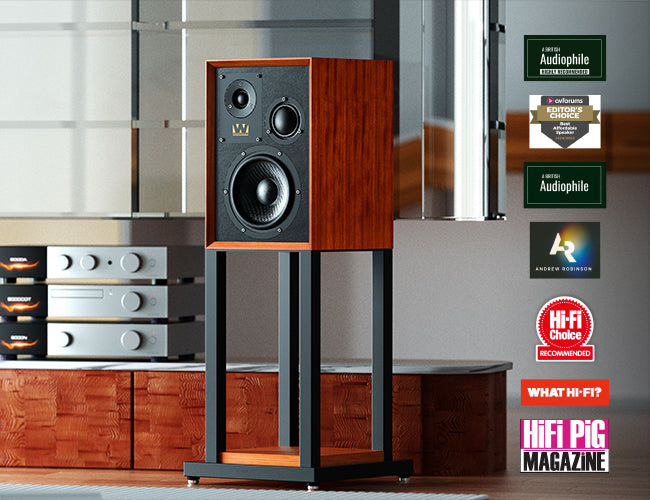
In accompaniment to the Super Linton, the Super Denton also arrived to continue the hugely successful Heritage series. Super Denton achieved something not managed in any previous heritage models: a compact design yet with a 3-way configuration, considered at the time of launch to be the smallest 3-way loudspeaker on the market.
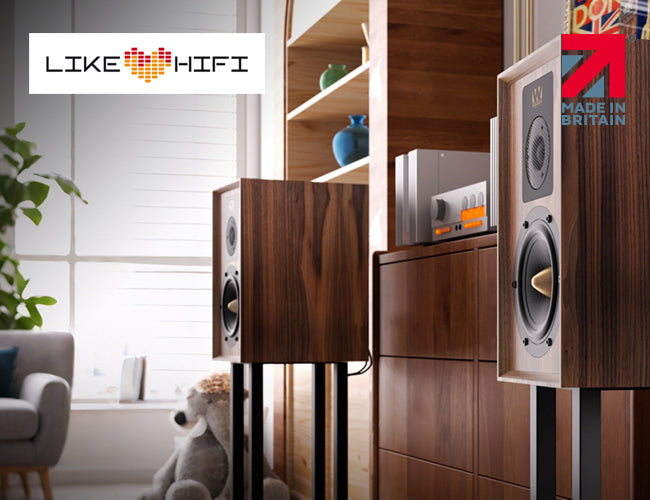
Limited Edition, Mass Appeal
In 2025, Wharfedale unveiled the Aston, a limited-edition Heritage Series two-way standmount made in Britain. Designed by Peter Comeau (Wharfedale’s Acoustic Director for 40+ years), the Aston is hand-built in Huntingdon with only 500 pairs made. It features a 15 cm carbon-fibre mid/bass driver (die-cast chassis, long-throw excursion, gold phase plug for clarity) and a 25 mm fabric-dome tweeter with a damped rear chamber (inspired by the Dovedale). The multi-layer cabinet uses a constrained-layer damping laminate (adhesive-bonded wood composites) to minimise colouration. Like the Dovedale and Super Linton, the Aston exemplifies Wharfedale’s blend of classic British style and modern engineering, now once again literally crafted in Britain.
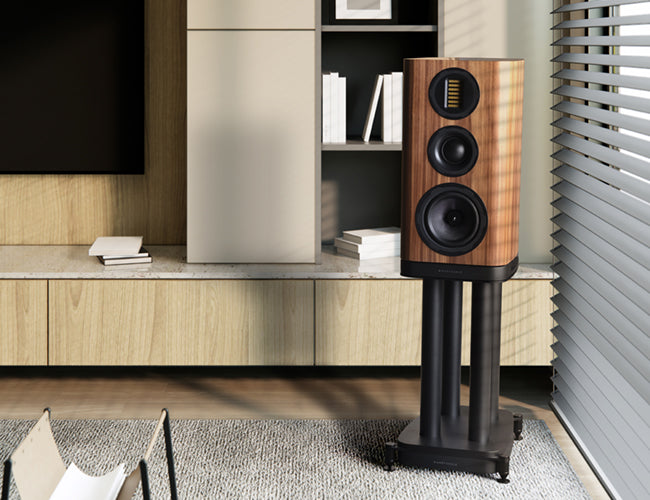
Redefining the Standard
Building on the success of the EVO 4 Series, Wharfedale unveils the EVO 5 Series — a new benchmark in high-end audio that remains accessible to all. Launched in May 2025 at the Munich High End Show, this latest range continues our tradition of delivering heavenly sound quality at refreshingly down-to-earth prices. Featuring advanced technologies derived from our flagship Elysian project, the EVO 5 Series offers even greater clarity, precision, and depth. With innovative design and engineering at its core, the EVO 5 Series embodies Wharfedale’s commitment to evolving sound, ensuring you experience truly immersive listening in every home.



